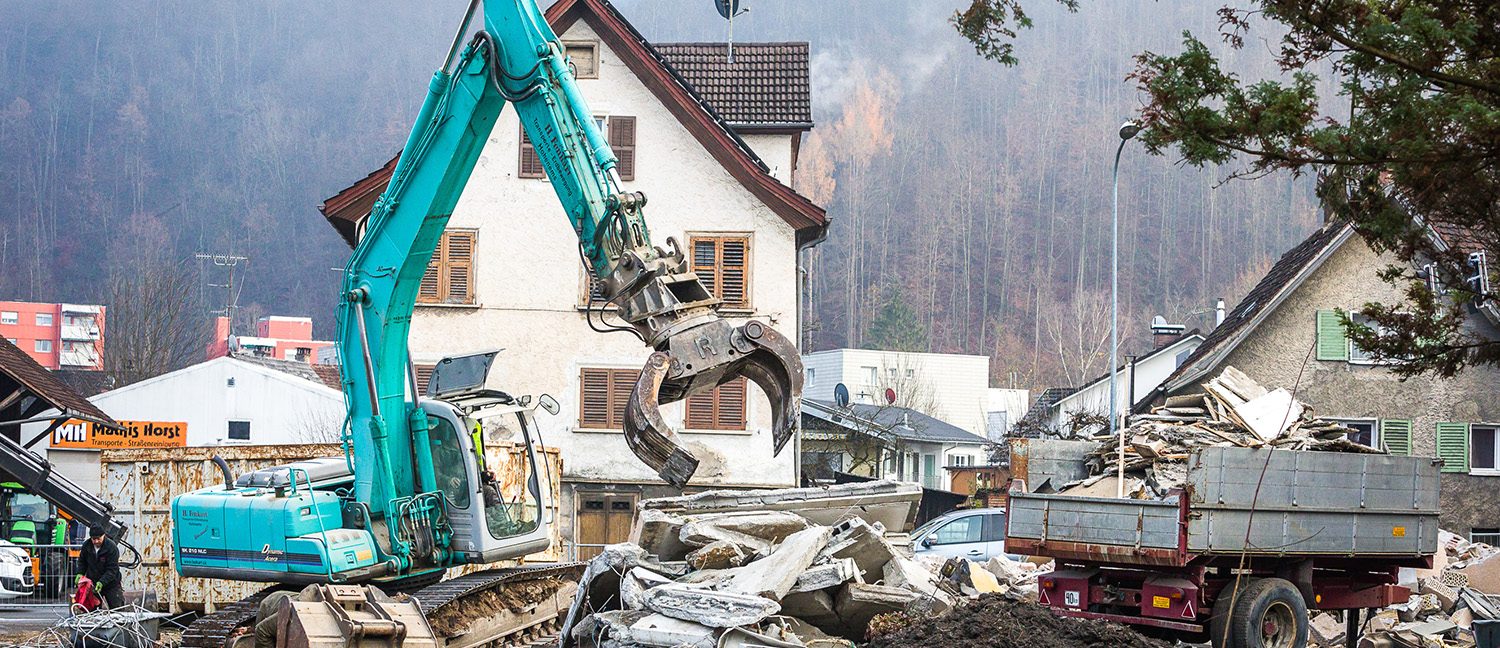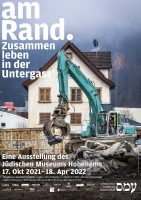The exhibition texts are in English only.
The Jewish Quarter in Hohenems has been receiving increasing public attention since 1991. Many buildings have been renovated and lovingly restored, in large part in close cooperation with the monuments protection authorities. This urban development has had a strong impact on the entire Hohenems center, especially on the neighboring former “Christengasse.” By now, the ensemble of the former “Judengasse” and “Christengasse” is considered unique.
By contrast, the busy road leading northward from the center still ekes out an existence on the fringes. Here, too, numerous Jewish families settled in the 19th century following legislation that allowed Jews to purchase real estate outside the “Judengasse.” Here, on the “Untergasse,” as the street was called before it was renamed Radetzkystraße, a new form of coexistence emerged in the first half of the 19th century. Mainly Jewish families on the social fringes of the Jewish community lived here together, peddlers and simple tradesmen, brandy producers and craftsmen.
Many of them have left only few traces, except for their correspondence with the authorities who, not least, curtailed the peddlers’ living conditions through oppressive restrictions. Some of the families eventually achieved prosperity and professional advancement by emigrating elsewhere, others remained what they were, simple folks.
Many of the houses on this street where Jews and Christians lived alternatingly or even at the same time are still extant today. Some are in poor condition, others have since been renovated. This neighborhood, which adjoins the center of Hohenems, will be subject to drastic changes in the coming years. A new town hall is planned, new residential development and commercial buildings will densify the area. Some existing, unprotected buildings will give way. The center will expand northward, and the old “Untergasse” on the city’s edge will receive new attention and a new social mix. A process of gentrification is imminent, and critical questions have to be asked of urban planning and municipal housing policy.
The Jewish Museum will accompany this process with historical documentation of the buildings’ and residents’ stories and, together with the Hohenems photographer Dietmar Walser, also sharpen the view of the urban space and the structural details of the existing buildings. At the same time, together with partners in the city, who are currently being approached, both the history of “Untergasse” as well as the current situation of its residents will be illuminated in interviews and rendered productive as part of a participatory renewal process of this quarter.
An exhibition of the Jewish Museum Hohenems
Curators
Anika Reichwald (Hohenems), Hanno Loewy (Hohenems)
Project lead
Anika Reichwald (Hohenems)
Photography
Dietmar Walser (Hohenems)
Illustrationens
Milan Loewy (Wien)
Interviews
Johannes Inama (Hohenems)
Exhibition design
atelier stecher, Roland Stecher, Thomas Matt (Götzis)
Archive
Raphael Einetter (Hohenems)
Education
Angelika Purin, Judith Niederklopfer-Würtinger, Claudia Klammer (Hohenems)
Public relations work
Birgit Sohler (Hohenems)
Translations
Lilian Dombrowski (Raanana)
Office
Gerlinde Fritz (Hohenems)
Cooperation partners
Filmforum (Bregenz)
TaS- Kino (Feldkirch)
vai Vorarlberger Architektur Institut (Dornbirn)
Visionscafé (Hohenems)
Cover images (detail): Dietmar Walser, 2020


